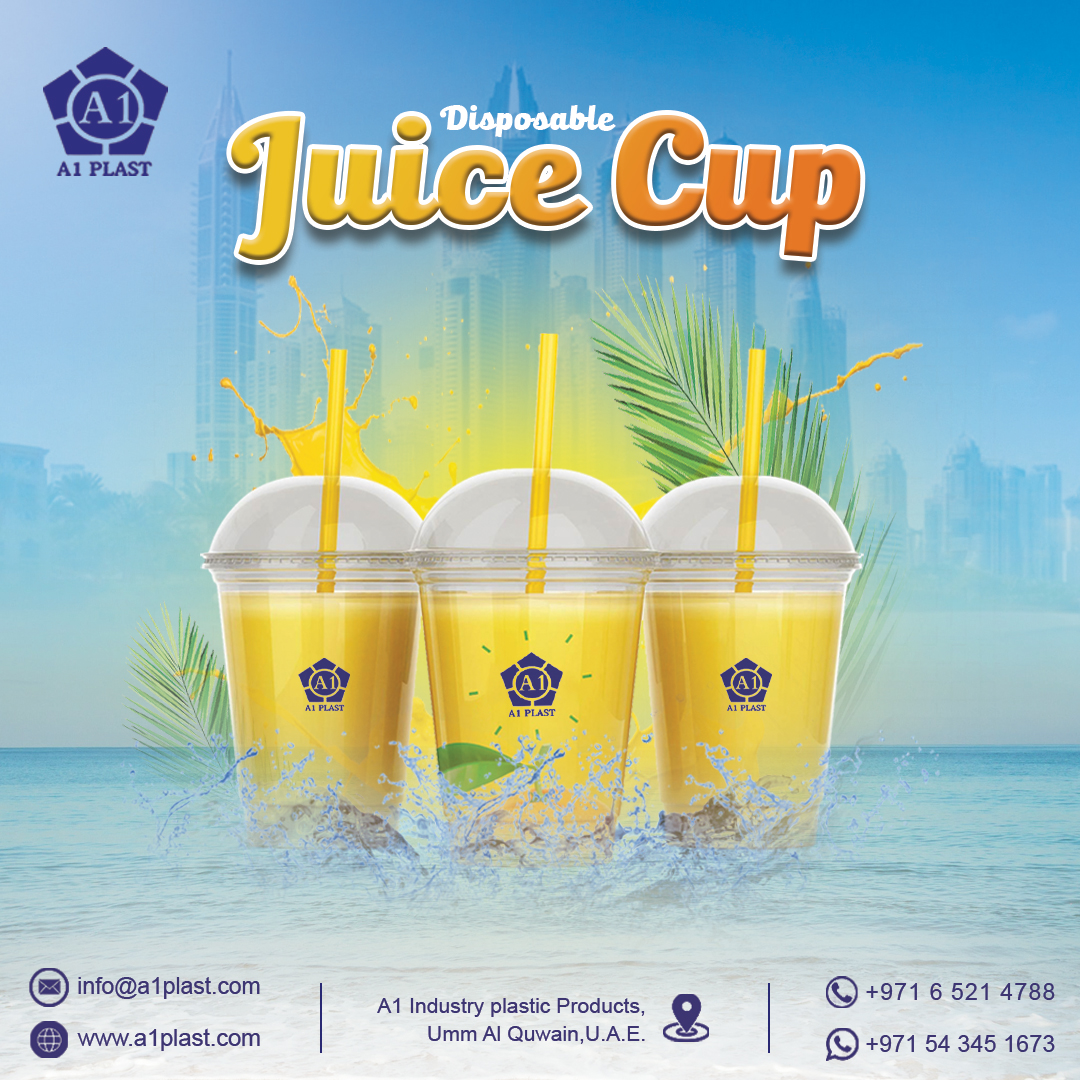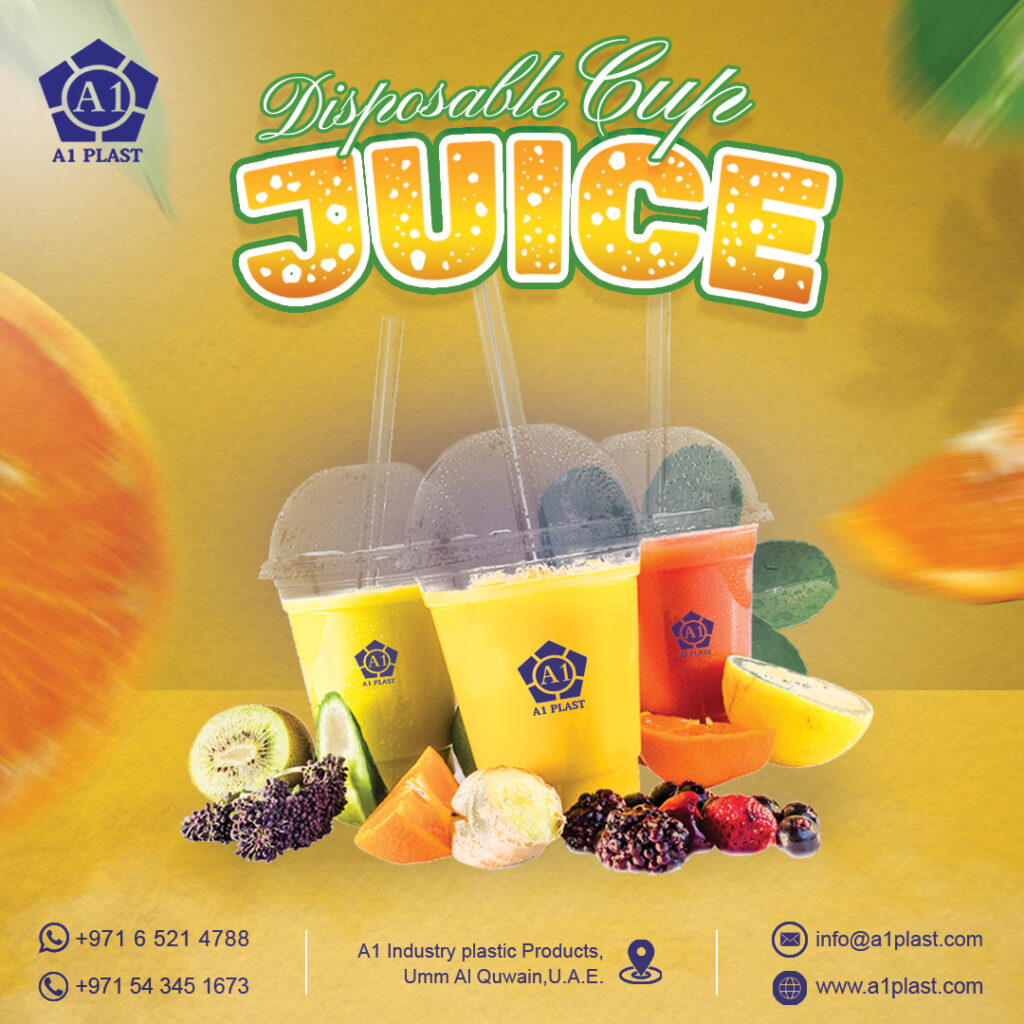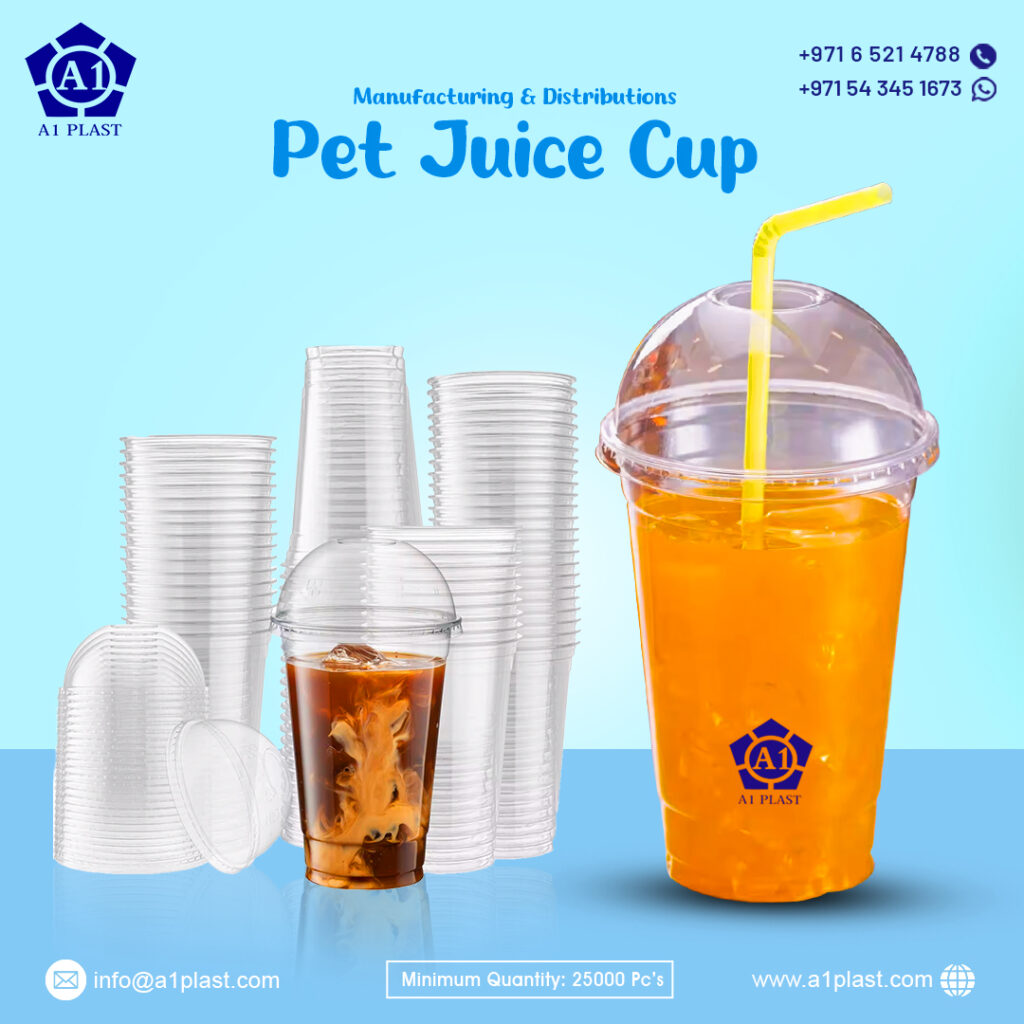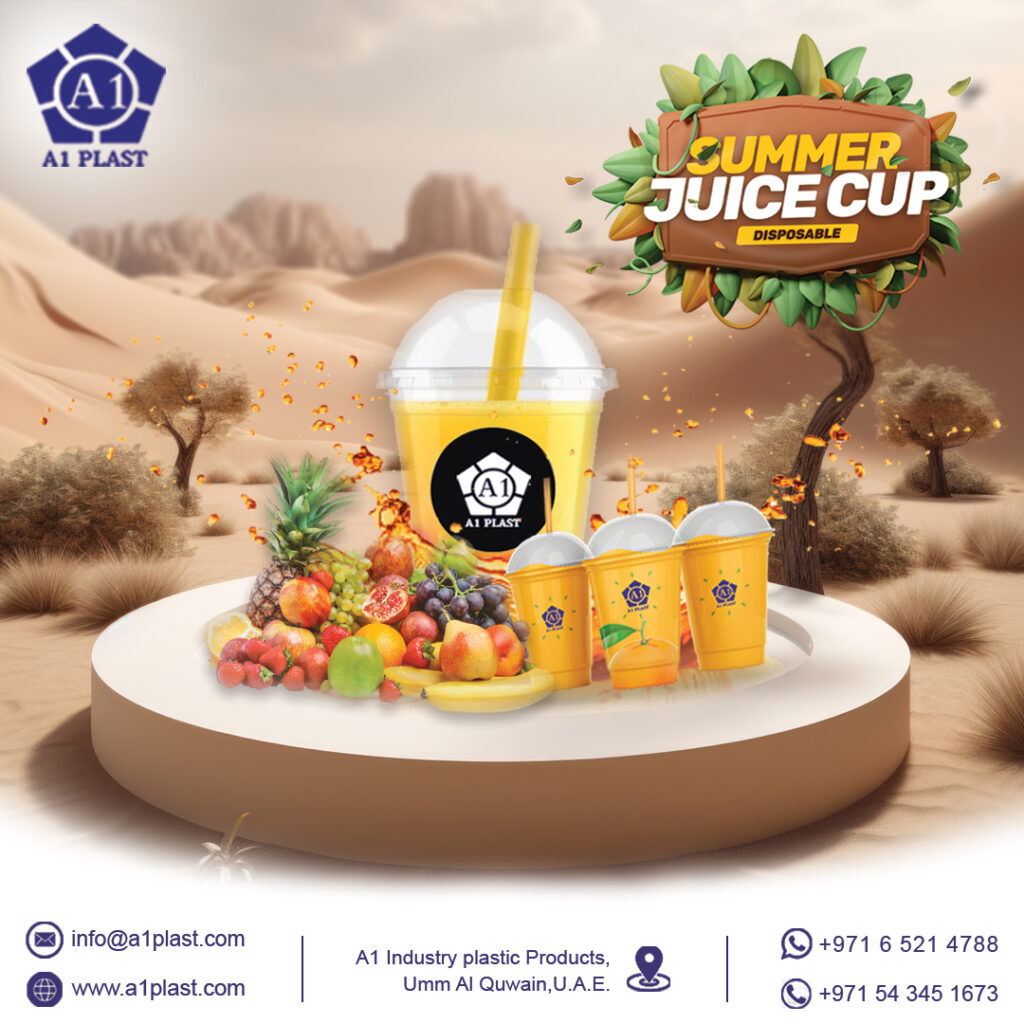A Comprehensive Guide for Industry Professionalsng:

Deep Dive into Plastic Juice Cup Manufacturing
Explore our mission, values, and history, showcasing the dedication and principles that fuel the success of Juice Cups Plastic in the UAE.

Plastic juice cups have become an indispensable part of the beverage industry, providing a practical and cost-effective solution for packaging and serving juices in a variety of settings, including retail, hospitality, and food service establishments. The plastic juice cup manufacturing industry is evolving rapidly, driven by technological advancements, sustainability demands, and evolving consumer preferences.
For professionals involved in the beverage, packaging, and manufacturing sectors, understanding the nuances of plastic juice cup production is critical for optimizing supply chain efficiency, ensuring compliance with regulatory standards, and meeting market demands effectively.
This comprehensive guide explores the plastic juice cup manufacturing industry, covering materials, production processes, market trends, regulatory considerations, and key factors to consider when selecting a manufacturing partner.

1. Overview of Plastic Juice Cup Manufacturing
.The production of plastic juice cups involves the conversion of raw polymer materials into durable, lightweight, and functional containers suitable for juice storage and consumption. These cups are designed to meet various performance criteria such as:
A.Leak resistance to prevent spills.
B.Clarity and aesthetic appeal to enhance product presentation.
C.Durability to withstand handling and transport.
D.Sustainability to align with eco-friendly initiatives.
Key Plastic Materials Used in Juice Cup Manufacturing
Manufacturers commonly use several types of plastics, each offering unique benefits and limitations:

Polyethylene Terephthalate (PET):
Advantages: Excellent clarity, lightweight, recyclable.
Applications: Ideal for clear, disposable juice cups in retail settings.
Limitations: Not suitable for high-temperature applications.
Polypropylene (PP):
Advantages: Heat-resistant, durable, cost-effective.
Applications: Used for both hot and cold beverages in takeaway services.
- Limitations: Lower clarity compared to PET.
- Polystyrene (PS):
- Advantages: Inexpensive, lightweight, rigid.
- Applications: Suitable for budget-friendly disposable cups.
- Limitations: Environmental concerns due to recyclability issues.
- Polylactic Acid (PLA) – Biodegradable Plastic:
- Advantages: Compostable, made from renewable sources like cornstarch.
- Applications: Preferred by eco-conscious brands and consumers.
- Limitations: Higher cost, limited heat resistance.
b. Thermoforming
This method involves heating a plastic sheet and forming it over a mold using vacuum pressure. Thermoforming is commonly used for lightweight, disposable juice cups.
Advantages:
- Cost-effective for mass production.
- Suitable for large-scale, high-speed manufacturing.
- Produces flexible and lightweight cups.
Challenges:
- Limited design complexity compared to injection molding.
- Material wastage due to trimming.
c. Blow Molding
A process where heated plastic is expanded using air pressure to form hollow, lightweight containers such as juice cups with unique shapes.
Advantages:
- Excellent for creating large volumes of uniform cups.
- Efficient material usage with minimal waste.
Challenges:
- Limited structural integrity compared to injection-molded cups.
- Less design flexibility.
3. Key Market Trends Shaping the Plastic Juice Cup Industry
Professionals in the beverage and packaging industries must stay informed about emerging trends to remain competitive and meet evolving consumer expectations. Some of the most notable trends include:
a. Sustainability and Eco-friendly Initiatives
Environmental concerns are driving the shift toward biodegradable and recyclable plastic options. Businesses are increasingly seeking suppliers who provide:
- Compostable PLA cups.
- Recyclable PET and PP options.
- Post-consumer recycled (PCR) plastic cups.

b. Customization and Branding
The demand for personalized juice cups featuring logos, unique colors, and creative designs is rising. Manufacturers offer advanced printing technologies, including:
- Digital and offset printing.
- Embossing and engraving for premium branding.
- UV-resistant coatings to enhance shelf life.
c. Lightweighting and Cost Reduction
Manufacturers are exploring thinner yet durable plastic formulations to reduce material usage and lower production costs while maintaining product integrity.
d. Smart Packaging Technologies

Innovative manufacturers are integrating QR codes, RFID tags, and interactive packaging elements to provide consumers with product information and engagement opportunities.
e. Regulatory Compliance and Food Safety
Increasing government regulations on plastic waste and food safety are pushing manufacturers to adopt stricter quality control measures and obtain certifications such as:
- FDA (U.S. Food and Drug Administration) approval for food contact materials.
- EFSA (European Food Safety Authority) compliance.
- ISO 9001 and 14001 for quality and environmental management.
4. Selecting the Right Plastic Juice Cup Manufacturer
When choosing a plastic juice cup manufacturer, professionals should evaluate several critical factors to ensure optimal quality, cost-effectiveness, and reliability.
a. Material Quality and Certifications
Ensure the manufacturer uses food-grade, BPA-free, and recyclable materials that comply with international safety standards.
b. Production Capabilities and Scalability
Evaluate whether the supplier can meet your volume requirements, especially during peak demand periods.
c. Customization Options
Look for manufacturers that offer tailored branding solutions, including color variations, embossed logos, and printed designs.
d. Sustainability Initiatives
Partner with manufacturers that prioritize eco-friendly production processes, such as using renewable energy, waste reduction programs, and biodegradable packaging options.
e. Supply Chain Efficiency
Assess the manufacturer’s logistics network to ensure timely deliveries, reliable inventory management, and competitive pricing.

5. Leading Global Plastic Juice Cup Manufacturers
Several established companies dominate the plastic juice cup manufacturing sector, offering high-quality, innovative, and sustainable solutions. Some notable manufacturers include:
- A1 PLAST. (UAE) – Specializing in sustainable packaging solutions.
- AI PLASTIC PRODUCTS (UAE) – Known for eco-friendly food packaging.
- A1 INDUSTRY PLASTIC PRODUCTS (UAE) – A leading supplier of disposable plastic cups.
- A1 PLASTIC INDUSTRY (UAE) – Focused on recyclable plastic packaging.
- A1 PLASTIC (UAE) – A pioneer in compostable and biodegradable cups.
6. Conclusion
The plastic juice cup manufacturing industry continues to evolve with innovations in material science, production techniques, and sustainability initiatives. Professionals in the beverage and packaging sectors must stay ahead of trends and regulatory changes to make informed sourcing decisions.
By understanding the key aspects of plastic juice cup production—from materials and processes to market trends and supplier selection—businesses can optimize their packaging strategies, reduce environmental impact, and enhance their brand positioning in an increasingly competitive marketplace.
If you’re seeking a reliable plastic juice cup manufacturer, prioritize sustainability, quality, and cost-effectiveness to ensure long-term business success.
